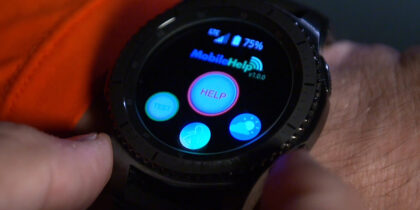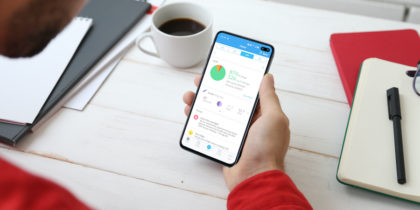Would you share fitness data with your boss? A surprising number of people are willing to do so, at least under the right circumstances. For employers looking to beef up their wellness programs and reduce healthcare costs, this could be great news.
According to research from Fidelity Investments and the National Business Group on Health (NBGH) — as reported in Forbes — the average employer is now spending $693 per year per employee on well-being initiatives. Most of that money goes toward physical activity programs and health screenings. But wearables and fitness tracking are quickly becoming popular components of corporate wellness programs.
In another NBGH survey, 37 percent of employers are now tracking employee fitness data via wearables, and another 37 percent will be soon.
This trend makes sense. Tracking employee fitness data provides a better understanding of your workforce’s unique health challenges, and you can use that information to make your wellness efforts more successful. Incorporating wearables into wellness programs also enables you to encourage and support employee efforts to live healthier lifestyles. And, of course, the healthier your employees are, the more your company saves on health-related costs, including insurance expenses and lost productivity due to sick or sluggish workers.
So, what does it take to build a successful health wearables program, and how can you get employees to actually participate?
Securing Patient Data in the Mobile Era
Download this free guide on ensuring the security of your healthcare apps. Download Now
Five Ways to Boost the Adoption of Health Wearables
Incorporating wearables into a wellness program requires some creative thinking and finesse. Not only do you need employees to opt in and actually use the device, but you also need to be careful about how you use the fitness data, taking care not to violate healthcare privacy rights or employment non-discrimination laws.
Here are five ways to increase your adoption efforts:
1. Pay for the device. BYOD probably isn’t the best way to go in when it comes to health wearables in the office. In a recent survey of British workers by AXA PPP Health Tech & You, 57 percent of respondents said they would be open to wearing a fitness tracking device during working hours, but only if it was provided by their employers.
2. Incentivize participation. Consider sweetening the pot by offering participants some form of tangible reward. In the AXA PPP Health Tech & You study, the number of workers who would use health wearables at work increased to 63 percent if employers offered a financial bonus for participating in the program. A similar 2014 study by PwC found that 68 percent of American workers would wear employer-provided devices streaming anonymous data in exchange for breaks on insurance premiums.
3. Think perks, not penalties. Both surveys indicated that workers are comfortable sharing fitness data to help improve their organization’s wellness programs. However, most people won’t participate if they think the results could impact their employment, performance evaluations or advancement opportunities. To give employees peace of mind — and avoid any potential legal trouble — most employers with fitness tracking programs use third-party databases or customizable apps to gather anonymous data. This way, employers know who’s participating and can gain insights about the overall health challenges of their workforce without infringing on individual privacy.
4. Make it fun. Financial perks certainly help boost participation, but so can the more intrinsic motivators, such as teamwork, socialization and competition. Consider ways you could use the sense of community in your workplace to get even better results. For example, you could hold a contest and offer a small prize to whomever takes the most steps, gets the most sleep or simply wears the device the longest. You could organize willing employees into teams that hold one another accountable for being more active throughout the day. Or you could ask employees for their ideas about what would make the wearables program more fun.
5. Consider adding customizable apps. More than a third of Americans use mobile health apps on their smartphones or personal wearable devices, so many of your employees are already enjoying the flexibility and personalization available in most consumer apps. By using customizable apps for your company’s wellness program, you give them the opportunity to do more with their fitness data and make healthy choices that fit their unique lifestyles. You also provide another touch point for the wellness program provided to employees.
The majority of American workers want to be healthier and appreciate employer efforts to promote wellness. Chances are, most of your workers would share their fitness data. They’re just waiting to be asked.
What does the future of healthcare look like? Here’s a glimpse at how wearables promote patient health and engagement.








